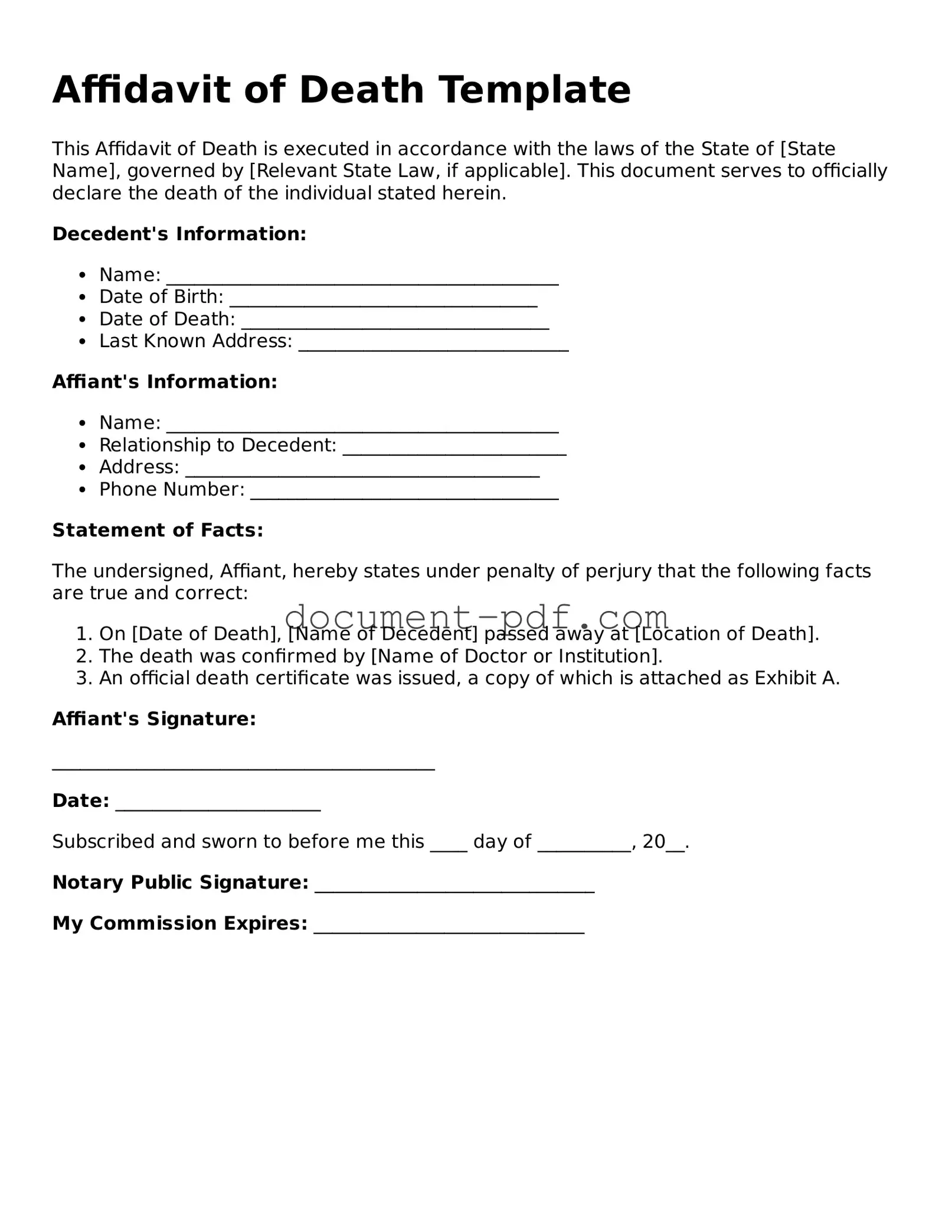Affidavit of Death Template
This Affidavit of Death is executed in accordance with the laws of the State of [State Name], governed by [Relevant State Law, if applicable]. This document serves to officially declare the death of the individual stated herein.
Decedent's Information:
- Name: __________________________________________
- Date of Birth: _________________________________
- Date of Death: _________________________________
- Last Known Address: _____________________________
Affiant's Information:
- Name: __________________________________________
- Relationship to Decedent: ________________________
- Address: ______________________________________
- Phone Number: _________________________________
Statement of Facts:
The undersigned, Affiant, hereby states under penalty of perjury that the following facts are true and correct:
- On [Date of Death], [Name of Decedent] passed away at [Location of Death].
- The death was confirmed by [Name of Doctor or Institution].
- An official death certificate was issued, a copy of which is attached as Exhibit A.
Affiant's Signature:
_________________________________________
Date: ______________________
Subscribed and sworn to before me this ____ day of __________, 20__.
Notary Public Signature: ______________________________
My Commission Expires: _____________________________
